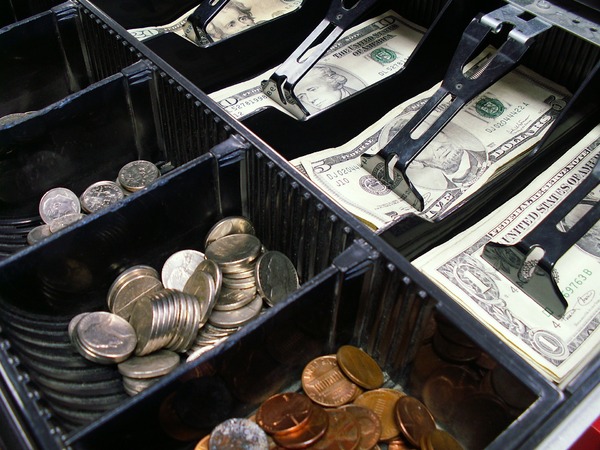It’s never been easier to invest in bitcoin. Most people buy bitcoin in one of three ways:
- Bitcoin exchanges: the most popular way to buy bitcoin is through online exchanges, which typically require a proof of your identity, and charge a small transaction fee. See our list of recommended exchanges in our Best of Bitcoin feature.
- Bitcoin ATMs: these are physical teller machines that allow you to exchange cash for bitcoin, and sometimes vice-versa. They may require proof of identity, and typically charge a larger transaction fee. See our comprehensive list of Bitcoin ATMs to find one near you.
- Trading bitcoin directly: just like cash, you can trade bitcoin face to face with other bitcoin investors. Search Meetup.com to find bitcoin groups near you.
That’s the short version. In this guide, we’ll dive deep into all the different ways to buy, sell, and invest in bitcoin.

Before You Begin
In some ways, you can think of bitcoin like cash. If you misplace your wallet with hundreds of dollars, no one is going to reimburse you. If you leave your wallet on the dashboard of your car, you risk having it stolen. Cash is safe, but you’ve got to be careful.
It’s the same with bitcoin. There is no government oversight of bitcoin, no insurance requirements for providers, no legal obligation to replace funds that are lost or stolen. Like cash, the security of your bitcoin is ultimately up to you. (Also like cash, it’s not difficult to keep it secure.)
As with any new investment, research is key. Do your due diligence before investing in bitcoin. Now, let’s get started!
Understanding Bitcoin Wallets
Bitcoin keys are stored in a personal database app called a wallet. Think of it like a cross between a physical wallet and an online bank account:
- Like a physical wallet, it stores money in the form of bitcoin: you can put bitcoin in, and take bitcoin out.
- Like an online bank account, you don’t actually see physical money, just a number representing your balance.
E ach wallet has an address, a long alphanumeric string like 1BvBMSEYstWetqTFn5Au4m4GFg7xJaNVN2. Because this is difficult to memorize, many apps use QR codes instead, like the one pictured at right. When you make a transfer or a purchase, you provide your wallet’s address (or scan the QR code), then enter the amount of bitcoin.
ach wallet has an address, a long alphanumeric string like 1BvBMSEYstWetqTFn5Au4m4GFg7xJaNVN2. Because this is difficult to memorize, many apps use QR codes instead, like the one pictured at right. When you make a transfer or a purchase, you provide your wallet’s address (or scan the QR code), then enter the amount of bitcoin.
There are different types of wallets, ranging from convenient wallets that allow access to everyday spending, to investment-grade wallets with military-quality encryption.
When choosing wallets, you have three choices:
- An offline wallet, which is typically stored on your cellphone, your computer’s hard drive, a removable flash drive, or a dedicated piece of hardware. These wallets require the most technical skill, as you are the one who will be setting up and configuring them. These are also the most secure, since they can be disconnected from the Internet — it’s like storing your cash in a safe. However, should the drive holding the wallet become corrupt, or should you lose the password, the bitcoin in the wallet are lost forever (just like losing the combination to your safe).
- An online wallet, which keeps track of your bitcoin keys. This allows you to access your wallet from multiple devices, giving you the ability to use your bitcoin anywhere without the need to access an offline wallet. Some of the larger online wallet providers are Blockchain Wallet, Coinbase, and Xapo. Using an online wallet also allows you to recover the wallet’s password, if you ever lose it. This does mean entrusting your bitcoin keys into the hands of a third party. (See our list of top wallets in our Best of Bitcoin feature.)
- A “vault” or multisig account, which entrusts your bitcoins to a third party who stores them in an escrow-like account. Transactions require multiple signatures: you control one, and the wallet provider controls one. You have possession of your bitcoin keys, but when you make a transaction, the providers have to use their keys for the transaction to be complete (like a safety deposit box that requires multiple keys). This offers a level of “buyer’s protection,” as the buyer can ask the provider to withhold transfer of its key(s) should the transaction go bad. Unlike an online wallet, however, a multisig account provider never has full access to your bitcoin; you can always use them in any way you wish, apart from the wallet provider.
Setting Up an Exchange Account
Once you figure out where to store your bitcoin, it is time to buy. If you intend to pay via a bank device, such as a credit card, debit card, or via online money transfers (PayPal, Skrill, and so on), an exchange is your best option.
Setting up an exchange account requires uploading proof of identity and extensive contact information in a lengthy account creation process that could take a week or more to complete. You typically have to provide your driver’s license or a personal photo, which can feel invasive. See this as a good thing: any reputable financial company needs to comply with “know your customer” (KYC) and anti-money laundering (AML) laws, which require proof that you are who you claim to be. You only need to be nervous if an exchange does not require proof of your identity.
Buying Bitcoin with a Credit Card
Once your account is set up, buying bitcoin with a credit card is as easy as finding an exchange that accepts credit cards, entering the amount of bitcoin you want, adding your wallet address and credit card information, and hitting “submit.”
Using a credit card for bitcoin purchases is limited to areas where instant credit card purchasing is allowed (such as the United States). Additionally, specific exchanges may not be available in certain jurisdictions or states, so it is important to read the terms and conditions of the exchange before attempting a purchase. Every exchange has its own transaction fees, so pay attention to exchange rates and remember to comparison shop.
Buying Bitcoin with a Debit Card
If you are buying a large amount of bitcoin, using a debit card/bank transfer may be the better option. Buying bitcoin with a debit card is similar to buying with a credit card. If the card is signed through a major credit card processor (Visa/Mastercard/American Express), it can be processed in the same way as a credit card.
Debit cards without a major processor’s mark cannot be directly used for purchases, but a bank transfer may be available as an option. You will need your account’s routing and account numbers, which you can get from your checks.
Here’s a word of warning, however. Some banks will not associate with accounts that buy or sell cryptocurrencies, and some exchanges charge processing fees for bank transfers. It is important to do your due diligence if you are interested in this option.
Buying Bitcoin with PayPal
Unlike credit cards and bank transfers, it can be difficult to find an exchange that is willing to accept PayPal. The reason for this is PayPal itself; it was once possible to buy bitcoin with PayPal and then request a chargeback. This means that a disreputable trader could buy bitcoin, ask for his money back, and get to keep both.
PayPal has since closed this loophole, but the company is still reticent when it comes to getting back into the bitcoin business. That is not to say that it is impossible, though. Virwox will accept PayPal payment for transactions, but the transaction cost can be high and there may be an initial limit on transactions in an attempt to stem possible chargebacks.
Buying Bitcoin with Cash

Buying in cash usually requires a person-to-person trade. You can find interested buyers or sellers through matchmaking apps such as BitQuick or Wall of Coins. This method is private, and does not require the extensive setup of creating an exchange account.
Some services allow for convenient deposit locations, such as participating banks, retail locations, and bitcoin-enabled ATMs. These services, however, are geared for the casual buyer; most have a buying limit of $1,000 per day.
Buying Bitcoin Locally
If you wish to buy bitcoin directly from a seller “over the counter” or without the use of an intermediary, try Meetup to find bitcoin groups near you. You can also use LocalBitcoins, which offers both a peer-to-peer matching service, as well as payment escrow for local purchases.
For some, the solution to buying bitcoin locally is using a bitcoin ATM, which accepts cash for bitcoins (click here to find one near you). Different operators have different requirements, such as pre-verifying your identity. Bitcoin ATMs also charge a transaction fee that tends to be higher than online exchange fees.
Buying Bitcoin Stock
Since bitcoin is not a company, there is no such thing as literal bitcoin stock. However, you can still get involved with bitcoin through instruments like the Bitcoin Investment Trust. While not actually owning any bitcoin, shares of the investment fund represent stakes in the funds’ bitcoin portfolio. Trading in the OTC market, these investment funds allow you to get in on bitcoin’s growth while being protected by commodity trading rules. The trade-off, however, is the hefty minimum investment, the lack of control, and that it’s priced at a premium. (See our Bitcoin Stock Guide here.)
The Choice Is Yours
As acceptance of bitcoin and altcoins continues to grow, the ease of buying bitcoin will evolve as well. However, even now, it is possible to buy bitcoin in a variety of ways. All that is required is to decide which option works best for your bitcoin buying strategy.
If you’ve enjoyed our Bitcoin Buying Guide, subscribe to Bitcoin Market Journal .

